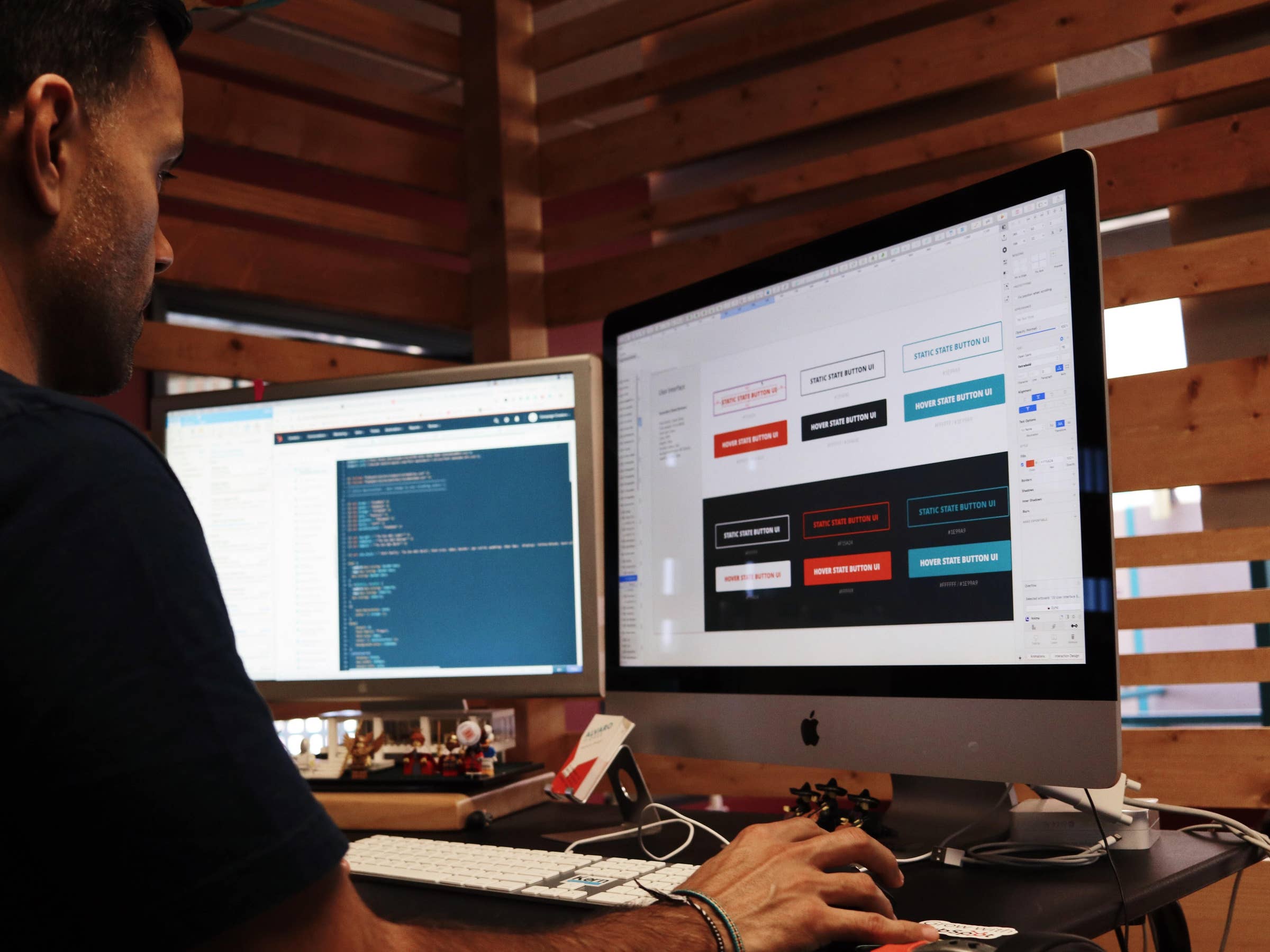All Categories
Featured
Table of Contents
- – Lifted Logic: Web Design In Kansas City - Seo ...
- – Web Design And Development - Invision Tips an...
- – Web Design - Linkedin Learning, Formerly Lynd...
- – Modern Website Designs - Best Web Page Design...
- – Responsive Design Best Practices - Google Sea...
- – Boxcar Studio - Wordpress & Drupal Web Design...
- – Top 30 Web Design Companies - Apr 2022 - Des...
- – Top Web Design Agencies Ranked - 2022 Review...
- – Law Firm Website Design, Attorney Web Design...
- – Penner Home - Durham Web Design - Penner We...
- – Top Web Design Courses Online - Updated [Ap...
- – Html Responsive Web Design - W3schools Tips...
- – Arch Web Design: Top-rated Web Design Agenc...
Lifted Logic: Web Design In Kansas City - Seo - Website ... Tips and Tricks:
Desktop apps require designers to develop their design and send it to an advancement team who can then transform the design to code. Typically, this is the standard for big and/or complex sites due to the fact that it allows the designer to focus on the overall appearance and feel, while all the technical obstacles are moved to the advancement group
Web Design And Development - Invision Tips and Tricks:

Remarkable styles can interact a lot of info in simply a couple of seconds. This is made possible with the use of effective images and icons. A fast Google search for stock images and icons will generate thousands of alternatives.
Web Design - Linkedin Learning, Formerly Lynda.com Tips and Tricks:
Your website visitors have multiple methods of engaging with your website depending upon their device (scrolling, clicking, typing, and so on). The finest website styles streamline these interactions to give the user the sense that they are in control. Here are a few examples: Never auto-play audio or videos, Never highlight text unless its clickable Make sure all types are mobile-friendlyAvoid pop ups Prevent scroll-jacking There are lots of web animation methods that can assist your design grab visitor's attention, and allow your visitors to connect with your website by providing feedback.
Modern Website Designs - Best Web Page Designers Tips and Tricks:
Your users must have the ability to quickly browse through your site without coming across any structural concerns. If users are getting lost while trying to navigate through your site, possibilities are "crawlers" are too. A spider (or bot) is an automatic program that searches through your site and can identify its functionality.
Responsive Design Best Practices - Google Search Central Tips and Tricks:
Responsive, Comprehending the advantages and disadvantages of adaptive and responsive sites will help you determine which site builder will work best for your website style needs. You might discover articles online that talk about an entire lot of different site style styles (repaired, static, fluid, etc). In today's mobile-centric world, there are just 2 site styles to use to effectively create a website: adaptive and responsive.
Boxcar Studio - Wordpress & Drupal Web Design ... - Ann Arbor Tips and Tricks:

a header) is 25% of its container, that component will remain at 25% no matter the change in screen size. Responsive sites can likewise utilize breakpoints to create a customized look at every screen size, but unlike adaptive websites that adapt just when they struck a breakpoint, responsive websites are constantly altering according to the screen size.(image credit: UX Alpaca)Fantastic experience at every screen size, despite the gadget type, Responsive website builders are normally stiff that makes the style hard to "break"Lots of offered templates to begin from, Requires comprehensive design and screening to make sure quality (when going back to square one)Without accessing the code, customized styles can be tough, It's essential to note that website contractors can consist of both adaptive and responsive features.
Top 30 Web Design Companies - Apr 2022 - Designrush Tips and Tricks:
Wix has been around since 2006 and has actually considering that established a wide variety of features and templates to suit simply about every organization need. Today, it's thought about one of the easiest tools for newbies. It's hard to select a winner in this classification, here are couple of things to keep in mind: If you're looking for the most customizable experience, pick Page, Cloud.
Top Web Design Agencies Ranked - 2022 Reviews - Clutch.co Tips and Tricks:
, come into play. Here are some of the pros and cons to consider when looking to embrace one of these tools: Capability to develop custom-made responsive sites without having to compose code Unmatched control over every aspect on the page Capability to export code to host elsewhere Complex tools with steep knowing curves Slower style process than adaptive website builders, E-commerce sites are an important part of site style.
Law Firm Website Design, Attorney Web Design, Lawyer ... Tips and Tricks:

The standard five aspects of web design, Finest resources to find out web style at home, What is web design? You need to keep your style simple, clean and accessible, and at the same time, usage grid-based styles to keep design products arranged and orderly, therefore creating a terrific general layout. Web style online courses.
Penner Home - Durham Web Design - Penner Web Design ... Tips and Tricks:
, The web design track of Tree, House offers 43 hours of video and interactive lessons on HTML, CSS, layouts, and other web design basics.
Top Web Design Courses Online - Updated [April 2022] - Udemy Tips and Tricks:
Effective web style brings a few different aspects together to promote conversions. These consist of: Engaging usage of negative space Plainly provided choices for the user(the less options the user has, the less likely they are to become overloaded and baffled)Apparent, clear calls to action Restricted distractions and a well believed out user journey (ie.
Html Responsive Web Design - W3schools Tips and Tricks:
Here are some examples: Clear calls to action are great web design; dirty ones are bad website design. High contrast typefaces are smart, efficient web style; low contrast fonts that are tough to check out are poor web style. Here are a couple of other elements to avoid: Distracting images and backgrounds. There are a few select instances where a tiled background could be an excellent choice, in many cases they're sidetracking. Non-responsive design. Nowadays your website merely requires to be mobile responsive. Unclear links and buttons. Visitors shouldn't have to hunt for links and buttons, they must have the ability to quickly see which images and pieces of text will take them to brand-new pages or confirm their options.
Arch Web Design: Top-rated Web Design Agency For Saas ... Tips and Tricks:
On a platform like 99designs you can host a design contestby providing a supplying and having designers submit designs send styles your specifications. Your web design might cost a few hundred to tens of thousands of dollars, depending on its intricacy. The more details they have, the more equipped they are to provide the perfect web design for you.
Learn more about Lovell Media Group LLC or TrainACETable of Contents
- – Lifted Logic: Web Design In Kansas City - Seo ...
- – Web Design And Development - Invision Tips an...
- – Web Design - Linkedin Learning, Formerly Lynd...
- – Modern Website Designs - Best Web Page Design...
- – Responsive Design Best Practices - Google Sea...
- – Boxcar Studio - Wordpress & Drupal Web Design...
- – Top 30 Web Design Companies - Apr 2022 - Des...
- – Top Web Design Agencies Ranked - 2022 Review...
- – Law Firm Website Design, Attorney Web Design...
- – Penner Home - Durham Web Design - Penner We...
- – Top Web Design Courses Online - Updated [Ap...
- – Html Responsive Web Design - W3schools Tips...
- – Arch Web Design: Top-rated Web Design Agenc...
Latest Posts
Web Design Services + Website Development Agency Tips and Tricks:
Web Design Services + Website Development Agency Tips and Tricks:
Responsive Web Design - A List Apart Tips and Tricks:
More
Latest Posts
Web Design Services + Website Development Agency Tips and Tricks:
Web Design Services + Website Development Agency Tips and Tricks:
Responsive Web Design - A List Apart Tips and Tricks: